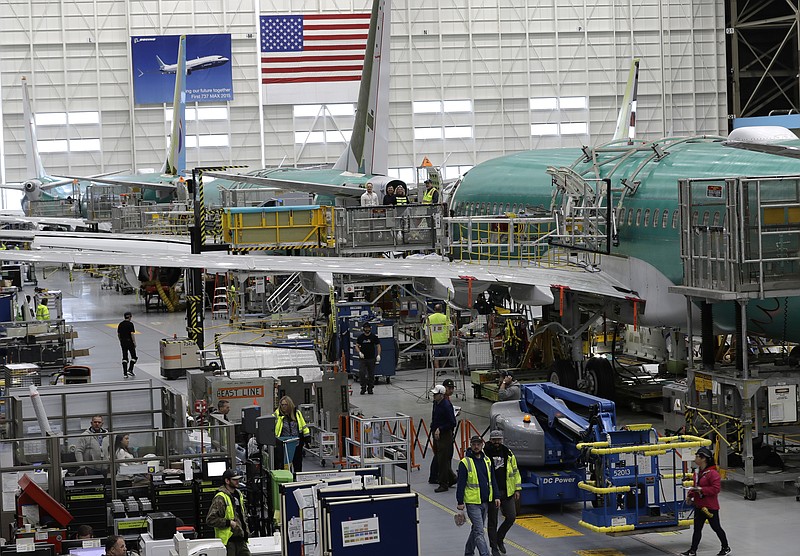For the fifth month on a row, U.S. industrial production contracted in December reflecting a number of challenges including trade tensions, dollar strength and a general slowdown in global production.
The Institute for Supply Management monthly gauge of factory activity fell to 47.2 for the final month of 2019, the lowest reading since June 2009. The ISM measure is a "diffusion index," calibrated such that a level of 50 is neutral. Readings above 50 indicate expansion, while values below 50 reflect declines in output. By this and other measures, U.S. manufacturing has been in recession for some months now.
Yet headlines trumpeting "U.S. manufacturing activity falls to lowest level in a decade" were misleading at best. To be sure, the ISM index is the lowest in a decade. But real U.S. manufacturing output adjusted for inflation stands today just below the all-time record level set at the end of 2018 and near the previous pre-recession peak in 2007. Manufacturing real output has actually increased by 70% since 1987.
This is important, because while not as prominent as it once was, industrial production remains a significant component of economic activity and an important leading indicator of future growth. Manufacturing contributed nearly $2.4 trillion of added value to the economy in 2018, representing 11.4% of GDP. Roughly half of that production was exported to our trading partners. And accounting for ancillary activity in support of manufacturing from industries like transportation and distribution, it is estimated that each dollar of manufactured goods adds an additional $1.82 to the overall economy.
Manufacturing employment in the United States has no doubt declined markedly. On the heels of WWII, one third of the workforce was engaged in industrial production; today it is just 8.5%. The greatest factor driving the sharp reduction in employment is the relentless progression of automation and innovation that have reduced the direct labor content of goods produced here. It is also a natural consequence of national wealth; as a nation becomes richer, it devotes more resources to services and tends to "farm out" resource-intensive activities like manufacturing to less wealthy, less developed countries. Worldwide, manufacturing employment makes up 23% of the global workforce according to the World Bank.
It is also true that while total real production is near record levels, the percentage of output accounted for by manufacturing has declined from 27% of nominal GDP in the early postwar period to 11.4% today. America has ceded the title of world's largest manufacturer to China, whose industrial sector makes up 29% of its total economy but who is also paying a heavy price in terms of environmental impact and worker safety as a consequence.
And yet, when adjusted for inflation, manufacturing output as a percent of price-adjusted GDP has been remarkably stable over the past 70 years. An interesting piece by the Federal Reserve Bank of St. Louis notes that price inflation in the manufacturing sector has been consistently slower than in the broader economy as a whole since 1947 (2.2% versus 3.2%) due to productivity increases. When adjusted for prices, manufacturing has ranged between 11.3% and 13.6% of real GDP for the entire postwar period despite the dramatic decline in employment dedicated to production, indicating the continuing importance of American industry.
The general slowdown in the ISM index is partially a function of a strong dollar which makes exports less competitive to foreign buyers. But a more general decline in global manufacturing is also evident, due largely to the ongoing trade war. This is important, as expanded global trade lifts all boats, and since manufacturing remains an important contributor to the U.S. prosperity.
Christopher A. Hopkins, CFA, is a vice president and portfolio manager for Barnett & Co. in Chattanooga.

